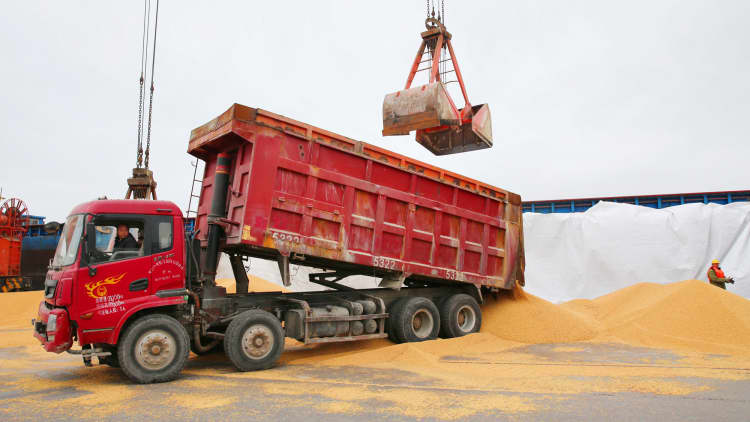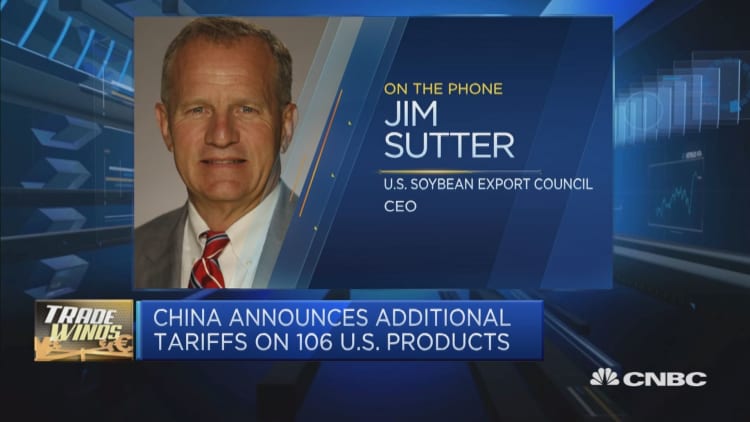China is looking to boost its domestic production of soybeans, potentially becoming less reliant on U.S. farmers amid a tit-for-tat trade war between the world's largest economies.
China included lifting soybean production in a five-year plan issued in 2016, but in early April it announced that soybean farmers in China's northeastern provinces would be getting higher subsidies than its corn producers this year. This notably came amid a fierce war of words between Beijing and Washington and just a day before China said it was going to slap a 25 percent levy on U.S. imports which included soybeans.
China is the biggest buyer of soybeans, importing 95.5 million tons in 2017— mainly from Brazil and the U.S. This was about seven times that of the country's own soybean output.

But should American farmers be worried? CNBC headed to the farms in northeastern China and here's what we learned:
Financial incentives
China is offering subsidies to farmers in four provinces, mainly in the country's northeast, to urge them to switch to soybeans.
The subsidies are reported in the local press to be as high as $552 per acre and were announced in the last few weeks. It also coincides with this year's planting season. The farmers we spoke to in Heilongjiang province, one of the four taking part in the government scheme, said they were being offered $162 per acre. The authorities are also guaranteeing higher floor prices, recently raising the government purchase price for soybeans.
Limitations
However, few farmers are taking up the offer. All the farmers we spoke to said the same thing: they were sticking with corn. Corn currently earns them double the profits of soybeans. One farmer, Li Shiguo, told CNBC that the soybean subsidy isn't enough.
"Soybeans are so cheap. You don't earn much growing them," he said.

Besides the lower profits, the area also lacks the mills, the proper distribution channels, and the seed technology for soybeans, making it tough for farmers to compete with inexpensive imports.
Farmer Li also said he had only heard of the subsidy quite late in the planting season, which agricultural analysts say would end in June.
But if the price is right...
Nonetheless, the farmers were eager to join the trade fight against the U.S. if the money made sense.

Farmer Li said he would switch to soybeans if the government raised the payout by another $120 per acre. He has been pleased with Beijing's threat to impose steep tariffs on American soybeans, saying Chinese farmers could benefit.
"Of course, if we don't import U.S. soybeans, our beans in China can be sold at a higher price," he said.
"We have fertile land here. How nice it would be if we could grow soybeans ourselves."


